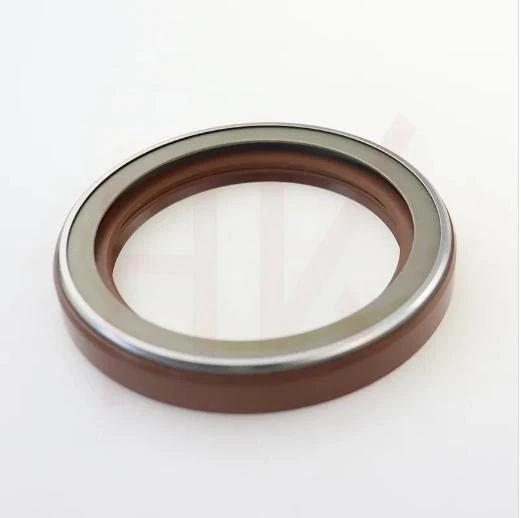Nov . 27, 2024 22:17 Back to list
Hydraulic Gear Pump Sealing Solutions for Enhanced Performance and Durability
Understanding Hydraulic Gear Pump Seals Importance, Types, and Maintenance
Hydraulic gear pumps are essential components in various machinery and hydraulic systems, providing reliable fluid transfer and pressure. The efficiency and longevity of these pumps depend significantly on the seals employed within them. This article delves into the importance of hydraulic gear pump seals, the types available, and maintenance tips to ensure optimal performance.
Importance of Hydraulic Gear Pump Seals
Seals in hydraulic gear pumps play a critical role in preventing fluid leakage and maintaining the internal pressure necessary for optimal pump operation. They create a barrier between the moving parts and the external environment, which is crucial as hydraulic fluids can be both costly and environmentally hazardous. Proper sealing minimizes the risk of contamination, maintains system efficiency, and extends equipment lifespan. Effective seals also reduce operational costs by minimizing fluid loss and ensuring the machine operates within designed efficiency parameters.
Types of Hydraulic Gear Pump Seals
There are several types of seals used in hydraulic gear pumps, each designed to suit specific operating conditions and fluid types
1. O-Rings These are one of the most common seal types. O-rings are circular and typically made from elastomers such as nitrile or fluorocarbon. They are versatile and can handle various temperatures and pressures, making them suitable for a wide range of hydraulic applications.
2. Lip Seals Lip seals, also known as rotary seals, consist of a flexible lip that maintains contact with the shaft. They are particularly effective in applications with rotating shafts and are designed to retain lubrication while excluding contaminants.
3. Gasket Seals Used primarily for static applications, gasket seals are flat and typically made from materials like rubber or metallic compounds. They are ideal for sealing the flanged areas of the gear pump.
4. Mechanical Seals These seals are more complex and consist of multiple components that provide a robust sealing solution. They are commonly used in high-pressure situations and environments where traditional seals might fail.
hydraulic gear pump seals

5. U-Cups and V-Rings These are specialized seals that fit into a groove and provide effective sealing under dynamic conditions. U-cups are often used in hydraulic cylinders, while V-rings are better suited for lighter loads and rotating configurations.
Maintenance of Hydraulic Gear Pump Seals
To ensure the longevity and reliability of hydraulic gear pump seals, regular maintenance is crucial. Here are some key tips for maintaining these seals
1. Regular Inspections Conduct routine inspections of the pump and seals for signs of wear, deterioration, or leakage. Early identification of issues can prevent extensive damage and costly repairs.
2. Fluid Quality Use high-quality hydraulic fluids that are suited for the specific type of pump and seals. Contaminated or incompatible fluids can lead to seal degradation and premature failure.
3. Temperature Control Ensure that the operating temperature remains within the recommended range for both the pump and the seals. Excessive heat can cause seals to harden or wear down, leading to leaks.
4. Avoid Overpressure Ensure that the hydraulic system operates within specified pressure limits. Overpressure can cause seals to fail, leading to leaks and potential system damage.
5. Proper Installation Follow proper installation procedures to prevent seal damage during assembly. A misaligned or improperly seated seal can result in leakage and mechanical failure.
6. Replacement and Upgrades Replace seals at the first sign of wear or damage. Additionally, consider upgrading to more advanced seal technologies as they become available, which may offer better performance and longevity.
In conclusion, hydraulic gear pump seals are vital components that ensure the efficiency and reliability of hydraulic systems. Understanding the different types of seals, their importance, and how to maintain them can lead to enhanced performance, reduced downtime, and significant cost savings in the long run. Regular maintenance, appropriate seal selection, and adherence to manufacturer guidelines are essential for optimal operation.
-
Wiper Oil Seal: Our Commitment to Clean Hydraulics
NewsAug.13,2025
-
Hydraulic Oil Seal for Self Discharging Cars
NewsAug.13,2025
-
Hub Oil Seal for Agricultural Tractor Hubs
NewsAug.13,2025
-
Skeleton Oil Seal with NBR Material
NewsAug.13,2025
-
Rotary Lip Seal for High Pressure Applications
NewsAug.13,2025
-
Cylinder Seal Kits Our Legacy of Hydraulic Trust
NewsAug.13,2025
-
Unlocking the Potential of Hydraulic Systems with Essential Sealing Solutions
NewsAug.06,2025
Products categories
















